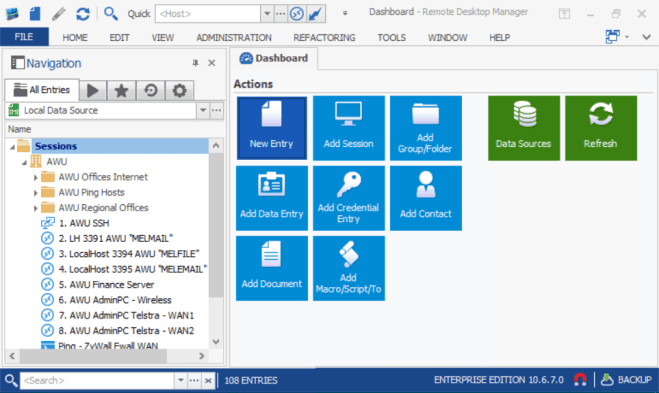

See here for a post that has all the details you need to get started. RDCMan is designed to replace the outdated Remote Desktops snap-in. The DNS name of the cloud service and the port of the Remote Desktop endpoint need to be entered in separate places in the RDCMan profile for your VM. To solve this inconvenience (and to systematize connections to remote desktops) you should use the official utility from Microsoft Remote Desktop Connection Manager (RDCMan). There is a trick to getting RDCMan to work with Azure VMs which can cause endless frustration if you don't know it. In addition RDPMan is able to save your logon credentials and if you are in an environment where it's safe to do this it's a great time-saver. I highly recommend this for organising your RDP connections to your Azure (or any other) Windows VMs. Fast-forward to 2014 and there is now a new 2.7 version, as before available as a free download from Microsoft. For many years it was stuck on version 2.2 published in 2010, probably because it originated as a tool used by Microsoft engineering and technical staff and wasn't the focus of any official attention. I use this program every day or at least try to now.

I have read many posts with no luck of resolving my issue.

I have this installed on a windows 10 64bit machine with 16Gb of ram and dual quad core cpu. There are other tools but this one is simple and does the job very nicely. RDCMan 2.7 keeps crashing when trying to open a second session. There was, in the form of a nifty utility called Remote Desktop Connection Manager or RDCMan. Years ago when I first started working with Hyper-V I soon realised there must be a better way of remoting to servers than using the client built in to Windows. Organise RDP Connections with Remote Desktop Connection Manager Posted by Graham Smith on DecemNo Comments (click here to comment)


 0 kommentar(er)
0 kommentar(er)
